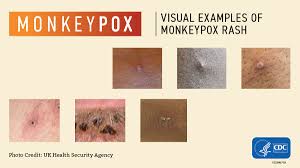Was it a good decision?
The main drivers for managing COVID-19 risks in Arizona schools are the mitigation measures that are in place to prevent the spread of the disease in schools. The other important factor is the level of community spread within the district. Both are important factors for school governing boards to use as they make these important decisions.
Earlier this week the ADHS quietly changed the criteria that they recommend school districts use to make decisions about whether to use in-person, hybrid or virtual instruction. Arizona uses three different metrics for the benchmarks: percent positivity, cases per 100,000 and something called COVID-like illnesses reported by hospitals.
The first 2 metrics are solid benchmarks. Both percent positivity and cases per 100,000 are routinely reported across the public health system now- and both rely on firm diagnoses. Covid-like illness, on the other hand, is voluntarily and sporadically reported and largely subjective. It comes through a voluntary system called “Biosense”.
The guidance that was established a few months ago stated that “Schools should start preparing for virtual learning when one or more of the benchmarks are in the substantial spread category”. Under the guidance established this week, the Department now says that “district leaders to move from hybrid to virtual learning if all three benchmarks move to substantial for two weeks”.
The problem with that change from my perspective is that it puts decision-making emphasis on all three indicators even though only 2 of the indicators are solid ones (case rates and percent positivity). Covid-like illness is only a syndromic surveillance indicator that is subjective and sporadically reported. Putting Covid-like illness on par with the others and stating that all 3 indicators need to be in the ‘substantial’ range before going to virtual instruction puts more emphasis than is reasonable for that indicator.
Members of school governing boards may not understand that the Covid-like illness is a flimsy metric and may very well make decisions based on the assumption that it is a good indicator of community spread. It is not.
Take Graham County as an example right now. Both their cases per 100,000 and percent positivity are well within the substantial range and have been for 2 weeks… yet Covid-like illness is firmly in the ‘good’ range. This new guidance could give the impression to Graham County governing board officials that their decision to keep in-person rests on good evidence (the fact that Covid-like illness is still in the ‘good’ range) when in fact that indicator is unreliable.
Perhaps the decision to keep the guidance developed this week will be reviewed after additional scrutiny.

